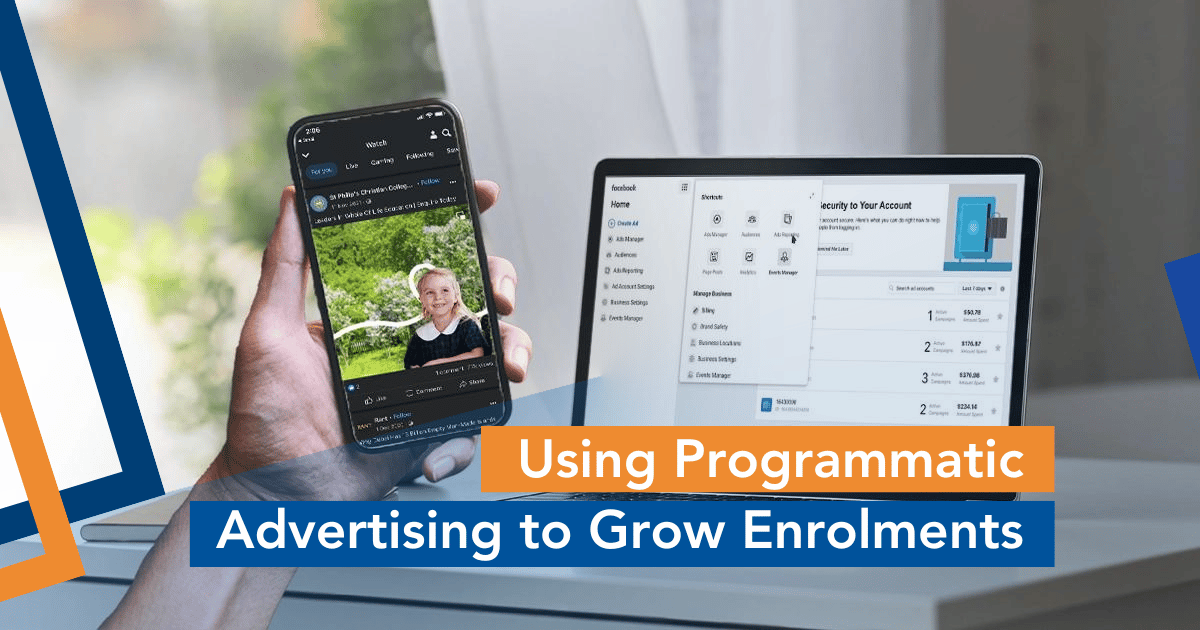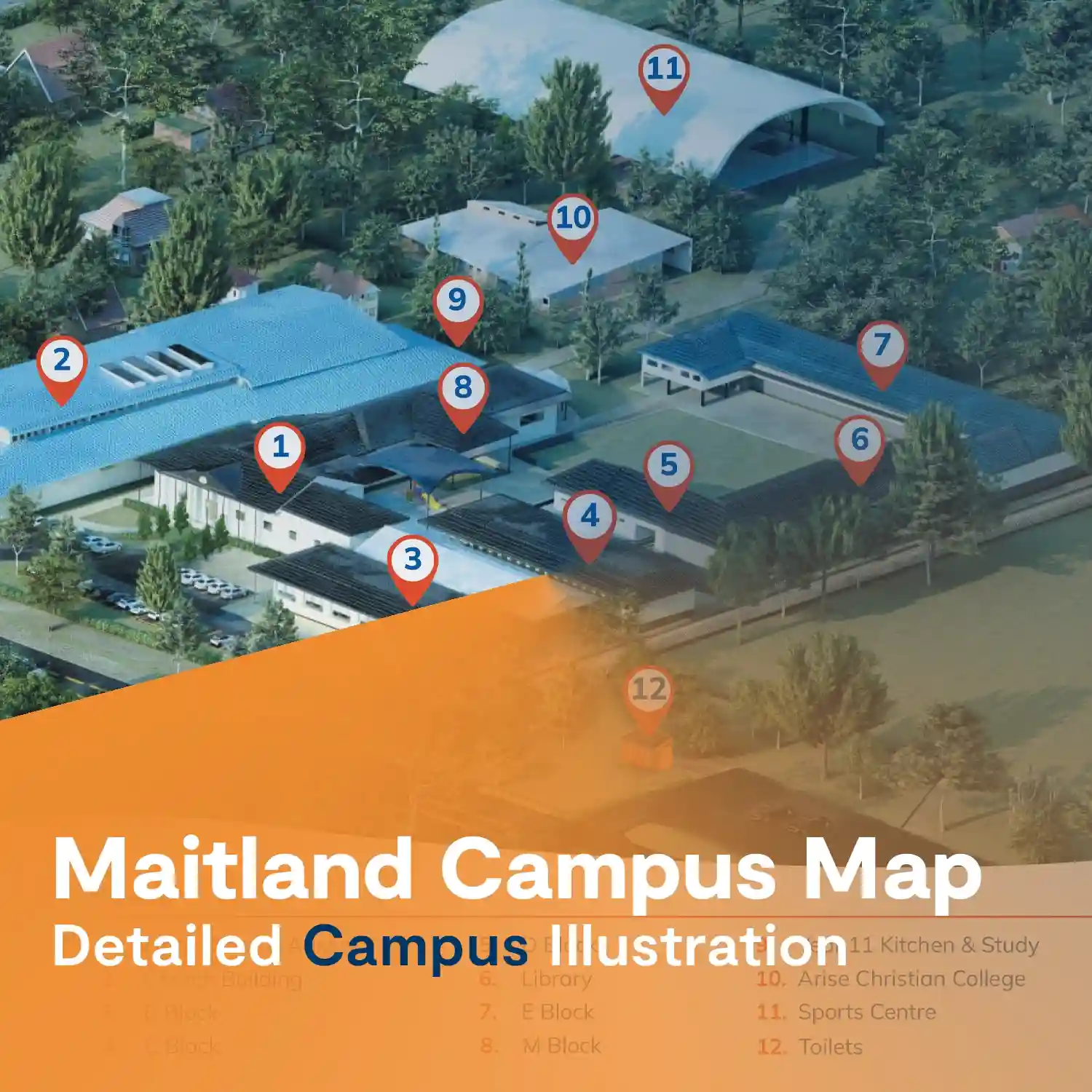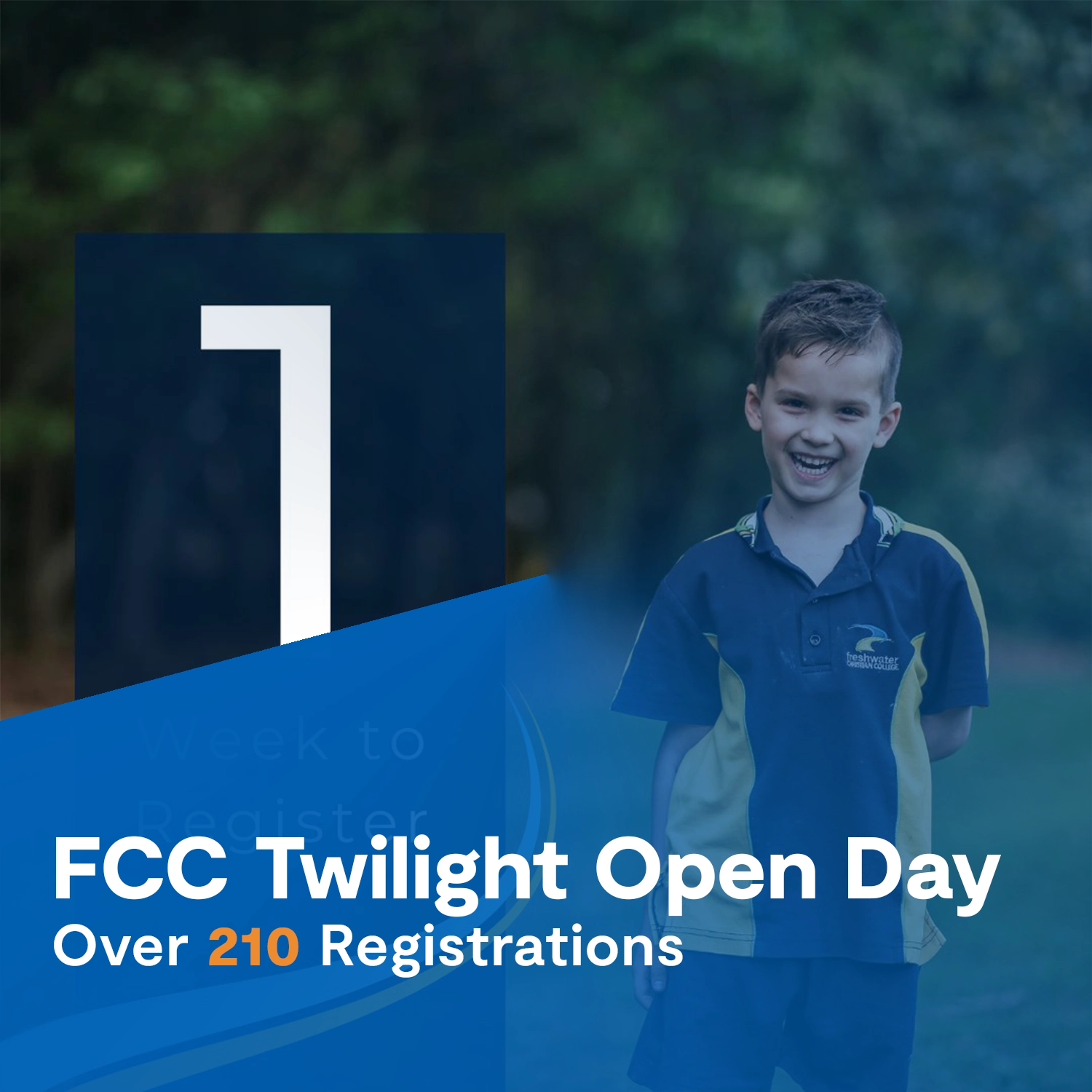Article by Daniela Moreno
In a world where technology is changing marketing, there are many ways to effectively reach your audiences, and one of these is through ‘Programmatic Advertising’. If you want to run effective ad campaigns for your school that can help you reach new audiences and let potential parents know what makes your school unique, without manually selecting from an extensive list of platforms and placements, programmatic advertising is the answer. Let’s get into it.
What is Programmatic Advertising?
Programmatic advertising refers to the automated buying and selling of online ads through software. Instead of taking the time to do all the heavy lifting yourself, buying and selling ads is more automated, making transactions more efficient. Computers and algorithms take care of most of the analytical work, leaving us the homework to negotiate or focus more on targeting. Speaking of targeting, buyers and sellers can access various data points and key performance indicators to ensure the right audiences are reached.
Through programmatic advertising, audiences are segmented using targeting practices that ensure the ads go to the right audiences at the right time. This method is much more tailored so it gets your ad to customers quickly and easily, thanks to advanced algorithms. When it comes to programmatic versus display advertising, programmatic can expand reach, increase types of ads, refine targeting options, and achieve speed and cost-efficiency.
How does it work?
When you purchase an ad, an algorithm evaluates various user analytics based on social engagement, location, behaviour, and other factors. With this information, algorithms can learn more about a target audience and determine what ad content would be relevant.
For instance, let’s look at our Kindergarten example:
If a potential parent is searching on the internet for “how to prepare my kid for the first day of kindergarten”, the ad system would evaluate the user and could display other advertisements relating to “Best Kindergarten in the area” or “The perfect school bag”.
Because ads are targeted to each user individually, they are likely to be placed more accurately and will increase the ad campaign’s efficiency.
Programmatic ads can be delivered to audiences in a variety of channels, including mobile platforms, desktop platforms, online tv and more.
Effective Programmatic Advertising: How it can help with your enrolments?
Delivering a tailored message
Programmatic advertising is an automated process that turns people’s web browsers into data points. Information about what they are looking at and how old or young the person might be, as well as any other actions taken online, is sent to an ad exchange where a series of activities, ranging from artificial intelligence to real-time bidding, results in the visitor seeing an ad targeting them directly.
Your message should be based on your target, academic offerings, educational levels (K-12, undergraduate, graduate, or continuing education), and whether your programs are offered on campus or online.
The ability to reach the exact target audience means you must be clear about whom to direct your efforts toward. If you’re looking to increase enrolments in Prep to Year 2, you’ll want programmatic advertising to focus on younger parents rather than older parents. Similarly, if your focus is online education, you probably won’t care as much about geographic targeting as you would about the age range and interest in online education.
Understanding your customer is integral to programmatic effectiveness. Developing personas to represent the target applicant can be helpful.
- Do you know the age, gender, and income of your prospective parents? Are they married or single?
- What kinds of activities interest the prospective parents/school leavers?
Being as detailed as possible about your target’s demographics, increases the chance of your ad being clicked on by the prospective parent or student.
Real-time optimization
Programmatic advertising allows you to adjust your ad campaigns in response to changing circumstances or take a more experimental approach. Monitoring your campaigns is key to making sure they’re giving you the best ROI. That’s why you always want to be on top of things and make adjustments when necessary.
Programmatic advertising will help you see which ads produce the best results. You only have seconds to catch your target’s attention, so make sure that everything about it is on point and perfect for this short window of opportunity. Tweak graphics, photos or copy as needed throughout each campaign until you find the perfect ad.
You will be present in every stage of their enrolments journey
Programmatic advertising lets you reach parents of students and university applicants in the awareness, consideration and decision phase of their enrolment journey. You can run a tailored campaign for each part of their journey. Your buyer persona visits multiple sites in the ‘Discovery’ stage of the journey; the robots will learn their search history, and you will have the opportunity to introduce your university, private school or ELC to them.
Geofencing is a powerful tactic for reaching applicants in all three stages of the buyer’s journey. Geofencing is a location-based service in which an app or other software program uses radio frequency identification (RFID), Wi-Fi, GPS, or cellular data to trigger a targeted marketing action, such as a text, email, social media advertisement, or app notification. For example, if you’re organising an open event, geo-fence the area to get in front of your audience while they’re browsing the web on their laptops or mobile devices.
To summarise, programmatic advertising is a powerful tool for reaching your target audience. It can deliver targeted messages and ads that are optimized across every stage of the journey, from awareness to enrolments.
At Roberts Digital, we will help you reach your goals. Whether it’s programmatic advertising, social ads or web design – we’ve got what it takes! Interested? Chat with us about how we can take your digital marketing to the next level!
Questions regarding this article? Please email me at mara@robertsdigital.com.au








